#Agile project management
Explore tagged Tumblr posts
Text
Hello Agile Enthusiasts! 👋 We want to hear from you about your experiences with Agile Project Management Tools. Your insights will help us enhance Vabro to better suit your needs. Cast your vote and share your thoughts! 🌟
🔗 Visit www.vabro.com to know more.
3 notes
·
View notes
Text
The Katamari model of project management: roll up enough tasks into a sprint and have your PM launch that shit into space, simultaneously making it beautiful and forgetting it
6 notes
·
View notes
Text
Project Management in Pharmaceutical and Biotechnology
Table of Contents Project Management in Pharmaceutical and Biotechnology The Unique Challenges of Pharmaceutical and Biotechnology Projects Strategies for Effective Project Management 1. Cross-Functional Teams 2. Agile Methodologies 3. Risk Management 4. Stakeholder Engagement Case Study: The Development of COVID-19 Vaccines Conclusion Project Management in Pharmaceutical and…
#Agile Project Management#Project Management Best Practices#Project Management Certification#Project Management Software#Project Management Solutions#Project Management Strategies#Project Management Systems#Project Management Techniques#Project Management Tools#project management training
0 notes
Text
Remote Work Essentials: Tools and Tips for Success

With the onslaught of remote work, days are gone when companies required their workers to come to their offices daily. While working from home may not always be the most helpful and productive way to work, it offers much flexibility for efficient collaboration and effective task management. Working remotely requires the right tools and strategies that one must implement in order to succeed. In this blog, we will explore the must-have remote work tools, along with some actionable tips for getting things done.The Importance of Remote Work Preparedness
The Importance of Remote Work Preparedness
Remote work isn’t merely about logging in from home; it’s about creating a functional, productive, and collaborative workspace, no matter where you are.
Having proper tools in place enables seamless communication, task management, and data security. Equally important, having the right habits and best practices allows you to focus, be efficient, and partner with your team.

Remote Work Toolkit: Essential Tools for Success
Let’s dive into the key categories of tools you need to stay organized, productive, and connected while working remotely.
1. Project Management Tools
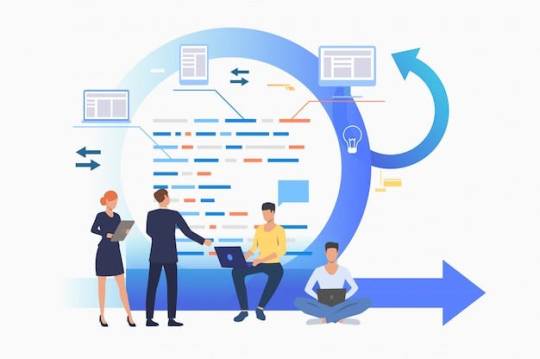
Remote teams thrive on clear structure and collaboration, making it possible to manage tasks and projects using collaborative tools. The project management tool is the heart of the team, where work can be assigned to someone, the status tracked, deadlines set, and communication facilitated.
Here are some top suggestions:
TeamCamp: A modern project management tool for remote teams, enabling task tracking, collaboration, and goal setting, direct from our blog on Best Project Management Tools for Remote Teams.
Trello: It is the Kanban board-based visual task management tool, perfect for organizing workflow.
ClickUp: A feature-rich platform that brings task tracking, team collaboration, and time management into one place
Asana: Great for project planning, tracking individual contributions, and ensuring deadlines are met.
2. Communication and Collaboration Tools

Strong communication is the cornerstone of remote work success. When in-person discussions are off the table, virtual communication tools step in to bridge the gap.
Popular options include:
Slack: Offers instant messaging, file sharing, and app integrations to keep teams connected.
Zoom: Ideal for video conferencing, webinars, and team meetings.
Microsoft Teams: A versatile communication tool combining chat, video calls, and Office 365 integrations.
Google Workspace (Google Meet, Chat, etc.): Provides seamless collaboration across Gmail, Docs, and Meet.
3. Time Management and Productivity Tools
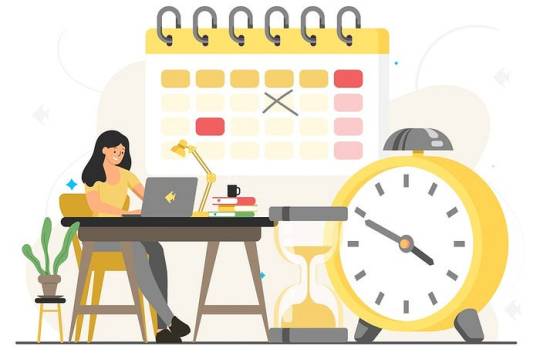
Working from home comes with its fair share of distractions. Time management tools can help you focus, stay organized, and make the most of your day.
Top time management tools include:
Toggl Track: Helps you monitor how much time you spend on tasks.
Focus@Will: A productivity app that combines neuroscience and music to improve focus.
RescueTime: Tracks your daily activities to provide insights into how you spend your time.
Clockify: A free time-tracking app that helps you keep tabs on billable hours.
4. File Storage and Sharing Tools

In a remote setup, sharing and storing documents securely is crucial for smooth workflows. Cloud storage solutions make it easy to access files anytime, anywhere.
Some reliable options include:
Google Drive: Offers free storage and real-time collaboration on documents.
Dropbox: A cloud storage platform with file syncing and sharing capabilities.
OneDrive: Microsoft’s cloud solution that integrates with Office applications.
Box: A secure option for file sharing and collaboration, often used by enterprises.
5. Cybersecurity and Privacy Tools
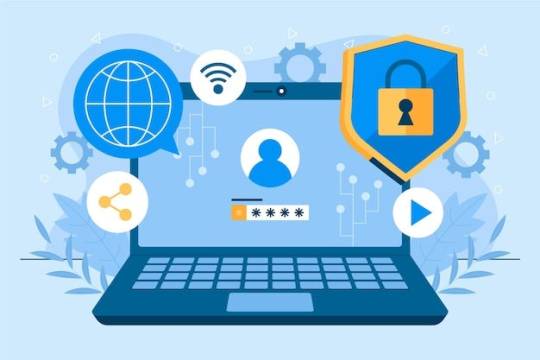
When working remotely, safeguarding sensitive data and ensuring secure connections is critical. Cybersecurity tools help protect your devices and online activities from potential threats.
Key tools include:
VPNs (Virtual Private Networks): Services like NordVPN or ExpressVPN encrypt your internet connection, protecting your data.
Password Managers: Tools like LastPass or 1Password help manage secure credentials for all your accounts.
Antivirus Software: Options like Bitdefender or Kaspersky ensure your devices are protected from malware.
Two-Factor Authentication (2FA): Many platforms, including Google and Microsoft, offer built-in 2FA options for added security.
6. Wellness and Focus Tools
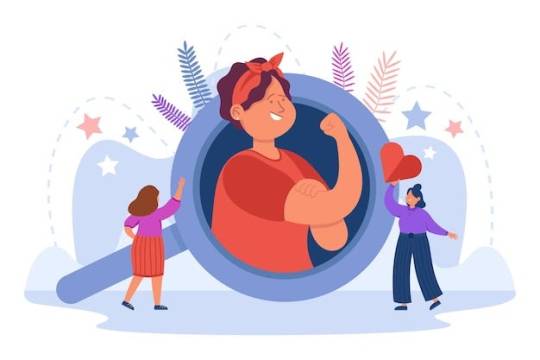
Burnout is a common challenge in remote work. Wellness and focus tools help you maintain mental and physical well-being while staying productive.
Examples include:
Headspace or Calm: Meditation apps to manage stress and enhance focus.
Stretchly: A tool that reminds you to take regular breaks during long work hours.
Habitica: A gamified app to help you build better habits and stay motivated.
Tips for Thriving in Remote Work
Having the right tools is half the battle — developing productive habits and a balanced routine is equally important. Here are some practical tips for remote work success:
1. Set Clear Boundaries
Define your working hours and communicate them with your team and family. This helps prevent overwork and ensures time for personal life.
2. Create a Dedicated Workspace
Set up a quiet and distraction-free area to work. A proper desk and ergonomic chair can improve posture and productivity.
3. Leverage Automation
Use automation tools like Zapier to integrate apps and reduce repetitive tasks, freeing up more time for critical work.
4. Overcommunicate
In remote work, it’s better to communicate too much than too little. Provide frequent updates on tasks, ask questions, and keep the team in the loop.
5. Take Regular Breaks
Follow the Pomodoro Technique or simply take short breaks to recharge. Stretch, hydrate, or step outside for fresh air.
6. Upskill Yourself
Use online platforms like Coursera or LinkedIn Learning to develop new skills relevant to your job. Remote work often requires tech-savvy professionals.
Frequently Asked Questions (FAQs)
1. What are the most important tools for remote work?
Essential tools include project management platforms like TeamCamp or Trello, communication tools like Slack or Zoom, and file-sharing solutions like Google Drive or Dropbox.
2. How can I stay motivated while working remotely?
Set daily goals, use productivity tools, and maintain a dedicated workspace. Also, ensure regular breaks and focus on self-care to prevent burnout.
3. How do I improve collaboration in remote teams?
Use tools like Slack for communication, Zoom for meetings, and project management software like Asana or ClickUp to ensure clarity and teamwork.
4. How do I maintain work-life balance in a remote setup?
Define clear working hours, create a separate workspace, and make time for hobbies, family, and relaxation.
5. How do I ensure data security while working remotely?
Use VPNs, enable two-factor authentication, and use antivirus software to protect your devices. Store files securely on trusted cloud platforms.
Author detail:
by Pratham Naik ( Project Manager , Content writer )
#project management#remote work#remote teams#agile project management#project management tool for remote team#task management#team management#project management software
1 note
·
View note
Text
youtube
#blog#selfmade#selfmadeceowade#blogging#josephis wade#IT#technology#innovation#buisness#prompt engineering#entrepreneur#viralpost#viral trends#viral-tech#techhacks#hacks#life hacks#hackerlife#data dump#deep dive#InfiniTec#josephiswade#Colorado#startup#seed stage#leanstartups#agile project management#Youtube
0 notes
Text
What is the role Agile Project Manager?
This article explores the tools and techniques essential for effective Agile project management. It outlines the roles and responsibilities of an Agile Project Manager, provides insights into what an Agile Project Manager does, and introduces key tools and techniques that streamline Agile processes. Additionally, the content highlights the Agile Project Manager roadmap, typical job descriptions, and salary expectations.

0 notes
Text
Srikanth Goduru destaca la transformación ágil para el éxito digital
La transformación ágil se ha convertido en una piedra angular para las organizaciones que buscan prosperar en medio de rápidos avances tecnológicos y demandas cambiantes del mercado. Srikanth Goduru, un experto líder en prácticas ágiles, ofrece información valiosa sobre cómo la transformación ágil impulsa el éxito digital, permitiendo a las empresas adaptarse, innovar y sobresalir. Srikanth Goduru enfatiza el papel fundamental de Agile para fomentar la innovación, acelerar el crecimiento y ofrecer un valor excepcional.
#srikanth goduru#agile project management#sri goduru#entrenadorágil#agile#metodologíaágil#innovación#industriatecnológica
0 notes
Text
🐽 Eddy the Pig: Lost in the Scrum of Life 🐽
Once upon a sprint, Eddy the Pig 🐖 decided he didn’t need a backlog or a burndown chart.
Once upon a sprint, Eddy the Pig 🐖 decided he didn’t need a backlog or a burndown chart. “Stand-ups? Pfft! I’ll just do my own thing. 🚀 After all, how hard can it be?” Spoiler alert: Eddy got so lost. 😱 He wandered off the product roadmap 🗺️ and into a maze of side quests: 🚗 Hitchhiking through bugs: Eddy thought he could handle a quick fix but ended up in an endless loop of debugging…
#agile project management#bacon story#Eddy the Pig#funny Scrum lessons#scope creep#Scrum humor#sprint mistakes#teamwork in Scrum
0 notes
Text
Introduction to Scrum Project Management: The Care and Feeding of Stickies
Master the art of sticky notes in Scrum! Discover how to keep tasks actionable, clear, and organized for team success. Ready to optimize your workflows? Let’s dive in! #Scrum #AgileLeadership #ProjectManagement
In Scrum, sticky notes are more than just office supplies—they’re powerful tools for organizing work, prioritizing tasks, and driving team focus. But like any tool, they need proper care and feeding to be effective. From writing actionable tasks to structuring information clearly, the way you use stickies can make or break your Scrum board. Let’s explore how to create sticky notes that work for…
0 notes
Text
Archana Joshi, Head – Strategy (BFS and EnterpriseAI), LTIMindtree – Interview Series
New Post has been published on https://thedigitalinsider.com/archana-joshi-head-strategy-bfs-and-enterpriseai-ltimindtree-interview-series/
Archana Joshi, Head – Strategy (BFS and EnterpriseAI), LTIMindtree – Interview Series
Archana Joshi brings over 24 years of experience in the IT services industry, with expertise in AI (including generative AI), Agile and DevOps methodologies, and green software initiatives. She currently leads growth strategies and market positioning for the Enterprise AI service line and the Banking and Financial Services Business Unit at LTIMindtree. Joshi has worked with Fortune 100 clients across various geographies and is a regular speaker at industry forums and events.
LTIMindtree is a global technology consulting and digital solutions company that works with enterprises across various industries to support business model evolution, innovation, and growth through digital technologies. Serving over 700 clients, LTIMindtree provides domain and technology expertise aimed at enhancing competitive differentiation, customer experiences, and business outcomes in an increasingly interconnected world.
Given your extensive experience in transforming IT services across various organizations, how has your personal leadership style evolved at LTIMindtree, particularly in driving the adoption of Generative AI?
With over two decades of experience in IT Services, I have dedicated my career to driving transformative technology solutions for customers, be it Agile/DevOps or generative AI (GenAI). At LTIMindtree, my focus is on empowering organizations to leverage GenAI for strategizing and executing their digital transformation journeys. I prioritize customer-centric strategies, working closely with clients to understand their unique challenges and deliver tailored AI solutions that drive business value. As the head of strategy, I need to collaborate with teams across various departments to promote GenAI adoption and stay informed about new developments to guide my decisions. GenAI processes vast amounts of data to provide actionable insights. This capability is particularly beneficial for a data-oriented leader like me, who values evidence-based strategies.
For example, every morning when I start my day with GenAI-based copilots to help me understand the top items that need my attention or provide insights to create reports that I can share with my team on adoption. In fact, I often say within the team that GenAI-based copilots have essentially become integral members of our team, much like trusted wingmen. They support us by providing valuable insights, automating tasks and keeping us aligned with our strategic goals.
How is Generative AI reshaping traditional IT service models, particularly in industries that have been slower to adopt digital transformation?
GenAI is revolutionizing traditional IT service models across all industries by significantly enhancing IT developer productivity. From co-pilots that generate code to synthetic data for testing and automating IT operations, every facet of IT is being transformed. Consequently, the focus of IT service models is shifting from cost-driven to efficiency- and impact-driven approaches. This means that the value of IT services is now measured by their ability to deliver tangible outcomes rather than just cost savings. This shift is also leading to new types of work in IT services, such as developing custom models, data engineering for AI needs and implementing responsible AI.
Just 18 months ago, these services were not the norm. Even in heavily regulated industries like healthcare and financial services, where legacy systems are prevalent, the value of GenAI in improving operational efficiency is increasingly recognized.
Our own research at LTIMindtree, titled “The State of Generative AI Adoption,” clearly highlights these trends. In healthcare, we’re seeing GenAI make a big impact by automating things like medical diagnostics, data analysis and administrative work. This is helping doctors and healthcare providers make quicker, more accurate decisions—though adoption remains cautious due to strict compliance and regulatory frameworks. In financial services, GenAI enhances risk management, fraud detection and customer service by automating manual tasks. However, the sector’s adoption is driven by concerns around risk, governance and sensitive data.
Can you share specific examples of how LTIMindtree has successfully integrated GenAI into traditional IT workflows to drive efficiency and innovation?
At LTIMindtree, we have a 3-pronged strategy towards AI. The philosophy of “AI in Everything, Everything for AI, AI for Everyone” underscores our commitment to integrating AI across all facets of our operations and services. This approach ensures that AI is not just an add-on but a core component of our solutions, driving innovation and efficiency.
Customers are looking at AI to improve efficiency across the board. From reducing hours spent on repetitive, time-consuming tasks to scaling operations and improving the reliability of business processes, AI is becoming a core part of their strategy. Our engineers are focused on integrating AI copilots into their workflows, covering everything from coding, testing, and deployment to software maintenance.
For example, in a transformational move for a Fortune 200 company, we’ve employed GenAI-based copilots to convert large stored procedures into Java, enabling their modernization journey. We recently worked with a large insurance company that wanted to automate its data extraction processes. They were facing scalability and accuracy issues with their manual approach. So, our team developed a companion bot, which now helps process multiple documents, extracting critical information like risk, eligibility, coverage and pricing details. This has significantly reduced the time it takes them to file product offers and manage various coverages.
With the rapid adoption of GenAI across various sectors, what are some of the ethical considerations enterprises should be mindful of, and how does LTIMindtree ensure responsible AI use?
The evolution of AI is promising but also brings many corporate challenges, especially around ethical considerations in how we implement it.
At LTIMindtree, we have an AI council comprising cross-functional experts from AI, security, legal, data privacy, and various industry verticals. This council has established AI assurance frameworks and collaborates with industry bodies on AI regulatory guidelines. Additionally, it works with teams implementing AI to validate their ethical risk postures.
To effectively implement GenAI, we have established a set of core ethical principles aligned with corporate values, addressing fairness, accountability, transparency and privacy. This requires executive sponsorship and support from legal and security teams. Next, technical interventions are incorporated into our internal processes that focus on high-quality, unbiased data, with measures to ensure data integrity and fairness. Fostering an ethical AI culture involves continuous training on AI capabilities and potential pitfalls, such as AI hallucinations. Finally, regular audits and updates of AI systems are done to address vulnerabilities and ensure the accuracy of AI outputs. This comprehensive approach ensures that GenAI is implemented responsibly and effectively, driving business value while maintaining ethical standards.
How does LTIMindtree’s AI platform address concerns around AI ethics, security, and sustainability?
As we continue to roll out new AI tools and platforms, we must ensure they meet our standards and regulations around the technology’s use. In addition to maintaining data quality to provide accurate and unbiased outputs, we are committed to meeting high standards for security and sustainability.
Our platform is built around the principles of responsible and mindful AI. In terms of sustainability, we are aware of the growing energy demand required to support AI models, from training to its continued operation. We have adopted a reduce, reuse and recycle approach to AI to address the carbon footprint and the importance of creating environmentally friendly and sustainable AI practices. Through this process, we focus on reducing the parameters by focusing on smaller, more specific large language models (LLMs) that can efficiently address the needs of enterprise applications while creating a smaller carbon footprint. Additionally, we repurpose data for various applications and use cases to avoid redundancies and reuse mechanisms and prompts that can be used for similar tasks to promote efficiency and sustainability. We are also looking at quantized models to reduce memory footprint, receive faster inference, reduce cost and build sustainable applications.
As I mentioned earlier, security is a key concern with the use of any AI tool or application. At LTIMindtree, we have not only prioritized data security and fair usage, but we have made it a cornerstone of our AI strategy. We have also incorporated 50+ best-in-class moderation APIs and responsible AI frameworks from third party providers like the Nvidia Nemo guardrails and the IBM Watson Governance models. Our platform efficiently manages data while factoring in privacy, security, ethical use and sustainability by leveraging sound governance measures and a well-built framework.
How is GenAI influencing Agile project management at LTIMindtree? What advantages does it bring to Agile teams, and are there any trade-offs?
Integrating GenAI into Agile practices is transforming how teams work. It boosts productivity, streamlines processes, and opens new avenues for innovation. As the software development landscape evolves, we are leveraging GenAI to automate those repetitive tasks that can bog teams down. This shift allows them to focus more on creative problem-solving and innovation—exactly where they should be.
When we start integrating GenAI into Agile frameworks, there are a few key points we would like to emphasize. First, it is important to understand the nature of AI tools and their potential impact on team collaboration. For instance, Agile teams need to be mindful of the limitations of these tools. They rely on pre-existing data rather than providing real-time insights, so it is essential to validate and refine their outputs.
Our AI native DevOps leverages cutting-edge technology like knowledge graphs, custom SLMs (small language models) along with software development lifecycle (SDLC) agents. This has the potential to achieve 35-50% efficiency in productivity across the Agile-DevOps cycle for an enterprise. It helps an Agile pod during user story creation, sprint planning, code generation to the CI/CD pipelines and subsequent incident management.
With AI transforming the IT industry, how is LTIMindtree addressing the need for new talent and skill sets? What initiatives have you led to ensure your teams are equipped for the AI-driven future?
The rise of innovative technologies in the IT industry has highlighted a gap between the skills our workforce currently has and what is needed to thrive in an AI-driven world. GenAI has the potential to completely reshape the daily roles of many employees, so preparing for new skills and roles is essential.
At LTIMindtree, we are taking the lead in this transformation by focusing on upskilling our employees to meet these emerging demands. We have our GARUDA initiative, specifically designed for training and onboarding teams in GenAI and enterprise AI. We recognize that effective training and educational resources are crucial, and we are committed to creating a culture of continuous learning.
Our training strategies include data-driven adaptations, real-time online learning, advanced reinforcement learning, transfer learning and feedback loops. This way, we ensure that our teams are not just keeping pace with change but are genuinely equipped to excel in their evolving roles. It is an exciting time, and we are all on this journey together.
In addition to this, we have tied up with seven academic institutions to equip future talent on AI skills. Here we are involved right from curriculum design to administering the curriculum, as well as equipping the professors via train-the-trainer approaches.
How do you see the role of human talent evolving in an increasingly AI-driven workplace, and what steps are you taking to prepare your workforce for this shift?
In the past, there were distinct roles for creative individuals and technology experts. However, there’s a noticeable shift towards adopting, mainstreaming and scaling innovative content creation techniques, blurring the lines between creativity and technology. This integration is impacting various industries, where the conventional separation between creative roles and technology jobs is gradually diminishing. While promising, this evolution comes with its challenges that indicates a substantial shift of focus on reskilling as an essential for capitalizing on AI’s benefits.
The big conversation now is how to make this GenAI change stick and scale. Here’s where change management becomes crucial. It requires a structured approach and a dedicated team to oversee the AI adoption process. People, not just technology, are at the heart of successful GenAI adoption. It can be a powerful tool for empowerment, even among those who initially perceive it as a threat. Forrester forecasts that by 2030, only 1.5% of jobs will be lost to GenAI, while 6.9% will be influenced by it. Therefore, leaders must prioritize transparency and motivate their workforce about the future of AI in the workplace.
AI is changing job roles across the IT sector, automating everyday tasks, and placing emphasis on strategic decision-making and complex problem-solving. At LTIMindtree, we believe this is a mindset shift and hence have established a dedicated central initiative GARUDA – that focuses on this change adoption. The GARUDA initiative is not just about role-based training and upskilling but also on creating AI ambassadors that can drive this adoption across various layers. We are also working with our HR function to look at impacts on various roles within the organization, along with their career paths and associated rewards and recognition. Today at LTIMindtree we have three levels of upskilling pathways – foundation, practitioner and expert. Over 50,000 of our associates have already completed the foundational skilling initiatives that include concepts of AI to the usage of copilots as well as responsible AI considerations.
What are some of the most innovative GenAI applications you’ve seen recently, and where do you see the technology headed in the next 3-5 years?
We are just scratching the surface of what GenAI can do, and I am thrilled about its potential across the IT industry and beyond. As more sectors jump on board, I find myself particularly excited about their applications to transform human lives.
At LTIMindtree, we have partnered with the UN Refugee Agency to enhance its crisis response capabilities using GenAI. This collaboration aims to accelerate on-the-ground crisis response, providing timely aid and support to refugees in need. The innovative use of technology helps bring hope and relief to vulnerable populations during their greatest times of need. For an American life insurance company, we developed a GenAI solution that translates spoken words in real-time, significantly improving the customer experience. By bridging communication gaps, this technology fosters better understanding and connection between people, bringing us closer together and ensuring that language barriers no longer hinder effective experiences.
Looking ahead, Agentic AI will enable autonomous task performance and decision-making. By 2027, industry-specific models will dominate, synthetic data use will rise, and energy-efficient implementations will grow. Multimodal models integrating text, image, audio and video inputs will enhance capabilities, driving significant economic impact and innovation. GenAI is poised to add up to $4.4 trillion to the global economy annually, revolutionizing industries and driving efficiency and sustainability, retail, healthcare and life sciences.
The reality is that every workplace will be touched by GenAI in some capacity, becoming a part of our everyday operations. As we continue this transition, I cannot wait to see how it evolves and what innovations will come next.
#000#ADD#add-on#adoption#Agentic AI#agents#agile#agile project management#ai#AI adoption#AI Ethics#AI hallucinations#AI models#ai platform#ai skills#AI strategy#AI systems#ai tools#American#Analysis#APIs#applications#approach#attention#audio#autonomous#banking#BFS#board#bot
0 notes
Text
Agile Project Management for Beginners: A Complete Guide
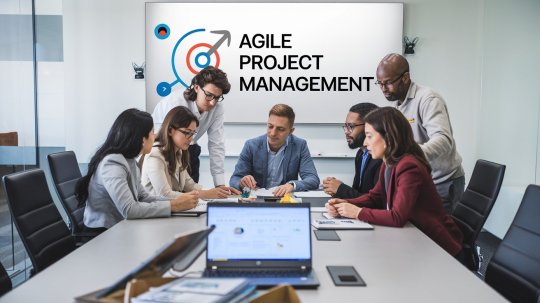
Agile Project Management has transformed how teams approach projects, making it a valuable skill for anyone looking to succeed in today’s fast-paced, adaptive work environment. For beginners, understanding Agile's basics and its key principles can pave the way for successful project delivery, whether in software development, marketing, or beyond. This guide will explore the fundamentals of Agile Project Management and how certification can bolster your knowledge and career.
What is Agile Project Management?
Agile Project Management is an iterative approach that breaks down large projects into manageable segments, or “sprints.” Unlike traditional project management, which follows a linear, sequential approach, Agile is adaptive. It focuses on constant feedback and improvement, allowing teams to make changes as they progress. This adaptability enables teams to respond to new insights or market changes, ensuring the final product aligns closely with stakeholder expectations.
Key Principles of Agile Project Management
For a beginner, it's essential to understand the core principles that make Agile unique:
Customer Collaboration Over Contract Negotiation: Agile focuses on involving customers and stakeholders throughout the project. Frequent check-ins allow for alignment and ensure the product meets the customer's evolving needs.
Responding to Change Over Following a Plan: Agile teams embrace change as an opportunity for improvement, even late in the project. This flexibility helps deliver better outcomes without being confined to a rigid plan.
Individuals and Interactions Over Processes and Tools: Agile emphasizes teamwork, communication, and collaboration over strictly defined processes. It values skilled team members who can adapt and problem-solve together.
Working Software Over Comprehensive Documentation: In Agile, delivering a working product is prioritized over exhaustive documentation. This enables teams to move quickly, iterating on what works and leaving out what doesn’t.
Benefits of Agile Project Management
Agile offers many advantages that make it appealing to businesses and teams, including:
Faster Delivery: Agile allows teams to deliver small, functional increments rather than waiting for the complete product.
Higher Customer Satisfaction: Customer feedback is consistently gathered and incorporated, leading to a product that more closely aligns with customer expectations.
Increased Adaptability: With Agile, teams can adjust to changes, whether due to new market conditions, stakeholder feedback, or technological advances.
Why Get Certified in Agile Project Management?
For beginners, an Agile Project Management certification offers structured training and formalizes your skills, making you more marketable to employers. Certifications, like Certified ScrumMaster (CSM) or Agile Certified Practitioner (PMI-ACP), demonstrate that you understand Agile frameworks and can effectively apply Agile principles to lead projects.
Conclusion
Unichrone offers various Agile Project Management certification training programs designed to provide hands-on experience and a comprehensive understanding of Agile. With these certifications, beginners can strengthen their Agile knowledge and improve their career prospects in a growing field.
For more info visit UNICHRONE or send mail at [email protected] to get a quote
0 notes
Text
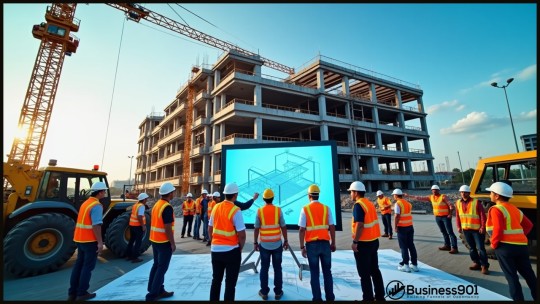
Projects just need precise planning and execution. Traditional project management methods have worked well in the industry for decades. Project complexity, market volatility, and evolving stakeholder requirements create the most important challenges for project managers today. The adaptive project framework provides a modern solution that helps teams respond to change while retaining control and streamlining processes. https://business901.com/blog1/how-to-optimize-projects-with-an-adaptive-project-framework/
#adaptive action#Agile Project Management#Agile Projects#creative projects#Customer Experience#Customer Value#Delivering Value Propositions#Human Systems Dynamics#machine language#Managing Customer Value#Market-Value Pricing#Marketing Clusters#Product Development#Product Managers
0 notes
Text
Why Agile Works: Insights from Leading Project Managers
youtube
0 notes
Text
Navigating the Future: AI's Influence on Project Management in Aerospace
The Rise of Artificial Intelligence in Aerospace Project Management Artificial Intelligence (AI) has emerged as a game-changer in various industries, and aerospace project management is no exception. With its ability to process vast amounts of data, analyze complex patterns, and make informed decisions, AI is revolutionizing the way projects are managed in the aerospace sector. From improving…
0 notes
Text
Teamcamp: The Ultimate Project Management Tool
Simplify your workflow with Teamcamp, the all-in-one solution for managing projects, tasks, files, and team collaboration. Designed for industries like IT, marketing, and creative fields, Teamcamp enhances productivity with features like time tracking, client portals, and automated invoicing.
🔗 Discover More: www.teamcamp.app 🚀
#project management#project management software#task management#team management#project management application#agile project management#agile software development#team management software
0 notes
Text
10 Steps to Choose the Right Project Management Tool for Your Business

In today’s fast-paced business environment, efficient project management is key to achieving success. Selecting the right tool can greatly enhance your team’s productivity and effectiveness. This article presents ten essential steps to guide you in choosing the perfect project management tool to meet your business needs.
Identify Your Business Requirements:
Begin by clearly defining your business requirements. Understand the size of your projects, the number of team members, collaboration needs, and any specific features necessary for your workflow.
Consider User-Friendliness:
Opt for a project management tool that is intuitive and user-friendly. A tool that is easy to navigate and understand will ensure quicker adoption by your team.
Assess Collaboration Features:
Evaluate the collaboration features of the project management tool. Look for functionalities such as real-time collaboration, document sharing, and communication tools to enhance team interaction.
Scalability:
Choose a tool that can grow with your business. Ensure it is scalable to accommodate an increasing number of projects, users, and any evolving requirements.
Integration Capabilities:
Check for integration capabilities with other tools your team is already using, such as communication platforms, file-sharing services, or customer relationship management (CRM) systems.
Customization Options:
Every business has unique processes and workflows. Select a project management tool that offers customization options, allowing you to tailor the tool to your specific needs.
Cost and Value:
Consider your budget constraints and evaluate the value offered by each project management tool. Some tools may have a higher initial cost but provide better long-term value with advanced features and scalability.
Security Measures:
Security is paramount when managing projects, especially if sensitive information is involved. Ensure the project management tool adheres to industry-standard security protocols to protect your data.
Trial Period:
Take advantage of free trials or demo versions offered by project management tool providers. This allows you to assess the tool’s suitability and functionality within your business environment before making a commitment.
User Reviews and Recommendations:
Research user reviews and seek recommendations from industry peers. Understanding the experiences of other businesses can provide valuable insights into the practicality and effectiveness of a particular project management tool.
By focusing on customization, scalability, user-friendliness, and continuous support, Tecnolynx app development company aims to empower clients with tools that not only meet yourcurrent needs but also evolve alongside the business growth and changing requirements.
#Project management software#Project planning tools#Task management software#Team collaboration tools#Agile project management#Kanban boards#Gantt charts#Project scheduling software#Resource management tools#Project management tool comparison
0 notes